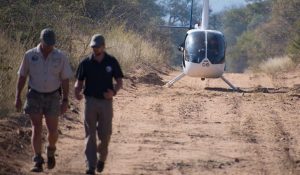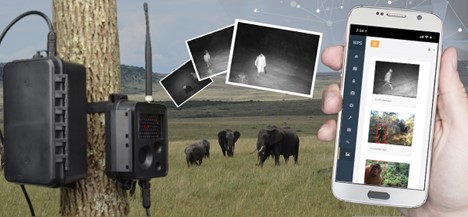The mission of Wildlife Protection Solutions (WPS) is to use technology for the conservation of endangered species and ecosystems. To that end, the non-profit organization is using artificial intelligence on remote camera images to support more cameras installed in critical wildlife habitats globally and expand its work from recognizing threats, classifying species, and aiding in anti-poaching to include the prevention of human-wildlife conflict.
To put the scope of operations into perspective, the organization has more than 25,000 images coming in from cameras every day. “Being able to immediately understand what’s in those images without someone looking at each and every one is crucial to our functioning,” says Matt Hron, Director of Product and Customer Success for Wildlife Protection Solutions.
Beyond the sheer scope of this image analysis effort, the organization is expanding the use of the technology into other application areas. And to do so effectively, it needed to be able to quickly build and deploy new AI models that meet the diverse needs of those efforts.
The group’s wpsWatch platform analyzes and monitors the large number of inbound images from the remote cameras hosted in more than 100 sites across almost 20 counties. It is powered by Microsoft Azure VMs (virtual machines) with NVIDIA GPUs (graphics processing units) and was initially focused on the security and anti-poaching elements of the group’s mission. To that end, WPS engaged with the Microsoft AI for Earth team to contribute images to MegaDetector, an AI model developed by the AI for Earth team to accelerate the processing of camera trap images. It’s a mutually beneficial relationship—WPS uses MegaDetector to help sharpen and refine its wpsWatch monitoring solution, and the infusion of images it supplies contributes to the ongoing improvement of the model. WPS offers its service and platform for free to the conservation community.
Over time, other applications for the solution’s real-time detection capabilities have arisen, such as human-animal conflict. For example, the platform can detect if an elephant’s coming into an area where it could cause some trouble. And the group is constantly moving into other areas as well. An example is when there is a need to detect a new endangered species that the AI hadn’t previously been trained on. The group must be agile enough to be able to create something new to help for that use case.
The operations involve using MegaDetector, a computer vision objection detection model, to detect animals, people, and vehicles in camera traps. The way it was designed supports the group’s desire to take on new objectives. “Because it is standards-based, it enabled a lot of our field clientele to pick and choose the correct hardware for their specific needs,” said Eric Schmidt, Executive Director of Wildlife Protection Solutions. “And it gave us the flexibility to adapt third-party systems through a variety of clever means so that we can work with those even though they are more of a closed ecosystem.”
Hron notes that a new version of MegaDetector (MegaDetector v5) came out this past year, and WPS immediately saw improvements in accuracy after implementing the new version.
AI infrastructure cuts identification time
WPS uses Microsoft Azure’s purpose-built AI infrastructure powered by NVIDIA GPUs for its AI needs. That combination was driven by the precedent set by Microsoft AI for Earth in developing the appropriate solution and making it available to the wildlife community. When it came time to set up a system of its own, WPS was already using Azure cloud infrastructure, so it was very easy to take what Microsoft had done and set its platform up on the group’s own Azure VMs.
 One performance metric for the platform is how long it takes to go from an image being received to the identification of what triggered the picture. To that end, the image analysis is accelerated by Microsoft Azure VMs that include NVIDIA V100 GPUs. wpsWatch sends images to an API that runs the MegaDetector model on a cluster of GPUs, providing a sub-second response time. Once an image is received, it’s a matter of seconds to get AI inference data back to know what’s in the photo.
One performance metric for the platform is how long it takes to go from an image being received to the identification of what triggered the picture. To that end, the image analysis is accelerated by Microsoft Azure VMs that include NVIDIA V100 GPUs. wpsWatch sends images to an API that runs the MegaDetector model on a cluster of GPUs, providing a sub-second response time. Once an image is received, it’s a matter of seconds to get AI inference data back to know what’s in the photo.
With MegaDetector v5 running on this infrastructure, the image analysis runs about 50% to 60% faster than before. Specifically, the average processing was about two seconds using MegaDetector v4. And it has been between 500 and 700 milliseconds, on average, with the latest model. “That’s quite a large improvement, especially as we scale how many images are being analyzed,” said James Goodheart, a software developer at WPS.
Another enhancement using v5 is improved accuracy. “We put through some old images that maybe weren’t detected or were tagged for retraining,” said Goodheart. “Some have been successfully detected in the newer version of the AI.”
Beyond the image analysis, other Microsoft infrastructure elements are used by WPS in its platform. Specifically, when a remote camera fires, image data is emailed from the remote cameras via the SendGrid service and is then parsed with the WPS API. (The time it takes to transmit the image varies based on the communication services available. Most use local cellular services, while some cameras are connected via Wi-Fi.)
The photograph is stored using Microsoft Azure Blob Storage, and the metadata is consigned to WPS by Microsoft SQL Server. The photo is then forwarded to various AI image recognition solutions to determine what is in the photo, such as vehicles, people, or animal species of interest, and then alerts can be delivered to the relevant team in the field based on what’s in the image.
In addition to performance, scalability and familiarity were essential. With the growth the group has seen over the past several years, the Azure architecture has been very important. One of the important aspects that made Azure a good fit is that the WPS was and is a .net shop. “We are familiar with the Microsoft development stack,” said Matt Morrissette, development manager for WPS. “It was a really natural fit for us as far as the skillset.”
“The efficiencies we are able to create using the .net software framework, Visual Studio, and the Azure stack makes it much more manageable for our small team,” said Morrissette. “And when we were looking at the MegaDetector, the availability of having the NVIDIA GPU-accelerated VMs already ready to go on the Azure stack, and it was just a matter of basically plug and play. The group currently runs two VMs in parallel on the load balancer for the MegaDetector inferences.
Watch the video: Wildlife Protection Solutions helps protect the wildest places with Microsoft AI for Earth
Expanding into new domains
One area that WPS hopes to use its AI infrastructure for is to support its efforts in branching out into the prevention of human-wildlife conflict. This requires the capability to look for species within the imagery and then recognize that, for example, elephants may be traveling along a corridor toward a human habitation where they are going to be doing some crop raiding. Or looking for lions or wolves that are approaching livestock areas and alerting local people to prevent predation and competition for food sources that way.
Additionally, the WPS is getting more into invasive species detection. What’s needed is the ability to monitor rats, cats, dogs, goats, or whatever the local invasive species is, in combination with eradication efforts to make sure there aren’t any further in the area. In each case, WPS would use the same application and cameras to look for threats, whether that’s people or wildlife.
There’s a separate initiative that Wildlife Protection Solutions is spearheading along with the Allen Institute for Artificial Intelligence and Wildlife Conservation Society, which is essentially a middleware platform called Gundi. That is the Swahili word for glue.
“We have connected our platform up to facilitate data interchange with a variety of different conservation endpoints, whether those are databases that can be used to track what’s happening in a protected area around the world or gathering data from a wide variety of different field sensors,” said Schmidt.
In theory, if anyone were to integrate with the Gundi platform, they could take advantage of what the group has been enabling from an AI perspective in its wpsWatch tool and then use both of those to interchange data and store it in whatever conservation tool that they ultimately want to manage all the information in.
Engaging the public
WPS would like to do whatever it can to encourage people to get involved in wildlife issues globally. “One of the things that really makes me excited about what we’re enabling is the ability for people around the world to get directly involved in conservation on an international wildlife basis,” said Schmidt. “We’ve had several people in the U.S., through the tools that we’ve provided, be able to monitor our data feeds as volunteers and be the first responders to poaching incidents and wildlife crime from around the world.”
Individuals can have a global impact because of what’s enabled through cloud-based technologies and the flow of data. “Although things are happening from around the world, maybe for the first time in human history, we’re able to have an impact on conservation individually in those far parts of the world,” said Schmidt.
Get involved! Reach out to [email protected].
AI infrastructure at any scale
Whether your project is big or small, local or global, Microsoft Azure and NVIDIA are empowering companies worldwide to push the boundaries of AI innovation at any scale.
Learn more about it at Microsoft/NVIDIA Solution Channel – HPCwire.
#MakeAIYourReality
#AzureHPCAI
#NVIDIAonAzure





























































